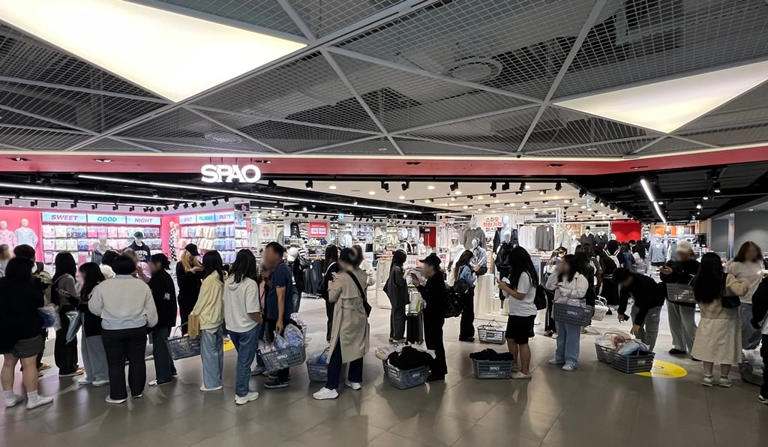FW
With an aim to train skilled workforce for the rapidly growing export and domestic sectors of the apparel industry and upgrade the technical skills to improve quality, productivity and efficiency Apparel Training and Design Centre (ATDC) recently introduced ‘Shram Bhawan’ in Gangtok.
Pawan Chamling, Chief Minister of Sikkim inaugurated the centre at Sokeythang, Gangtok. The inaugural function was attended by Darlie Koshy DG & CEO ATDC & IAM in the presence of D.D Bhutia, Minister, Department of Labour, Govt of Sikkim, and K. Jayakumar, Principal Secretary, Labour & Skill Development and Entrepreneurship Department.
ATDC has signed an MoU with Labour & Skill Development and Entrepreneurship Department for one year. The MoU was signed between Darlie Koshy, DG&CEO, ATDC & IAM and K. Jayakumar, Principal Secretary, Labour & Skill Development and Entrepreneurship Department. Under this MoU Labour & Skill Development and Entrepreneurship Department will sponsor 300 students of ATDC. The new centre is well equipped with sewing machines labs, CAD lab for computerised pattern making, computer embroidery machine, and resource centre. It will offer short term programs under ISDS, MOT, GOI (ATDC-SMART) for 300 hours.
Pawan Chamling, distributed the ATDC Tool kits to the students and he even took keen interest in the technologically advanced machines and the training systems and conferred recognition of the state government to ATDC.
www.atdcindia.co.in
Gujarat government recently announced 14 per cent rise in minimum support price (MSP) for cotton. The move is not welcomed by the farmers who were expected to benefit from the same. After losing recent local body elections to Congress in the rural areas, the BJP-led state government announced a bonus of Rs 110 per 20 kg on cotton to please the farmers.
However, even after getting the bonus, MSP would be Rs 920 per 20 kg, up to six per cent less than the market price of Rs 950-980. Also the government’s move is quite delayed since many farmers have already sold their cotton in the month of October, the beginning of the season. The state government's Rs 110 per 20 kg bonus would be above the Centre's MSP of Rs 810 for the cotton year (October-September) 2015-16. Union government had hiked its MSP by Rs 10 per 20 kg this year.
In September, Bharatiya Kisan Sangh (BKS), a farmers' organisation had asked for financial assistance for farmers in Gujarat. But now it is displeased since the announcement was made after farmers sold their produce at lower prices. According to industry sources, 40 per cent of the season's crop has already arrived in the market. Those who have holding capacity are expecting Rs 1,100 per 20 kg for raw cotton as there is a fear of crop damage due to pest.
Gujarat government will pay the bonus only on Cotton Corporation of India (CCI) procurement. Due to low MSP, the state-owned CCI has procured only 5,000 bales this year. Last year, CCI had purchased about 650,000 bales cotton from Gujarat.
Cotcorp.gov.in
Sighting rising number of orders coming from Amritsar, Punjab, A.T.E. and Karl Mayer have opened a new booking office in the region. Considered as important textile centres of the country, Amritsar has witnessed consistent growth in the traditional warp knitting sector over the last five decades. There are around 2,000 warp knitting machines in the region, and a majority of players are using the Karl Mayer and Liba machines. Karl Mayer has recently booked several orders in the area.
Now through its new office, the company would support their customers with world-class technology solutions, prompt service, spare parts, and training on warp knitting technology. According to Gurudas Aras, Director, A.T.E. Enterprises, A.T.E.’s presence in Amritsar comes in response to the growing textile sector in general and the warp knitting sector in particular in this area. A.T.E. is a one-window solution provider across the textile value chain, and with this new set-up, it will be able to support the customers in the region.
Karl Mayer has always been at the forefront of bringing the best technological innovations to customers in a way that makes life simpler for them, according Kevin Socha, Managing Director, Karl Mayer Hong Kong.
www.karlmayer.com
OGTC organized 11th International Conference on Apparel & Home Textiles on October 31, 2015 at India Habitat Centre, New Delhi. 354 delegates from the industry, academics and research institutes attended the event. Total six papers were presented in the pre-lunch session followed by six workshops .
The session commenced with R C Kesar, Director General OGTC elabotaing on the theme of the conference. Prashant Agarwal, CEO, Wazir Advisors chaired the session. Nidhi Sood of Madura Clothing presented a paper on People Engagement Practices and Reward and Recognition Systems and Surender Jain on Turnaround Story- Different Facets.
Aisshvarya S. Shah, CEO and Chief Trainer Work Senses, Chennai in her presentation questioned the industry on the goals set for their company and how they look at human resource as a part of this goal. She said “We have to link HR and training to profitability. The efforts to people management in the garment industry have not been great in the past. What is required was not ‘policing’ of workers but ‘performance management’, which is an HR job. But how many companies look at ROI for investments made in people-management?”
In the post tea session Mr. A.N. Singh presented a paper on Value Creation for Customers in Apparel Industry, Mr. Navin Chopra, Aglie Group presented a paper on New Developments in the space of Quality in Indian context and its relevance to Garment Industry and Dr. Archana Gandhi, NIFT presented a paper on Merchandising- Pre and Post Manufacturing.
In this interesting session the debate veered around whether the target of the company should be on ‘value creation’ or ‘money creation’… while AN Singh, a well-known consultant argued that if a company focused on value, profits would follow automatically; Navin Chopra of Aglie Group countered that without the motivation of money, how would anyone even want to work. Both thoughts garnered interest, though both agreed that the goal in both cases was to run a successful business that was responsive to buyer’s demand.
It was stressed by all speakers that old ways of doing business could not carry the industry forward and it was imperative to innovate and adopt new approaches. Even educational institutes were under fire, with many in the audience requesting a re-look at how students were being prepared for the industry.
Lal Sudhakaran, Head MGE Madura Clothing chaired the session on Turnaround- (Focus-Planning). Placing significant importance on the challenging details of the production floor, the conference featured two insightful sessions on pre-production planning and style changeovers. The first session focusing on planning was delivered by Surender Jain and Bhavesh from Wazir Advisors. The session speakers outlined on the tenets of cost and quality for optimum planning, and further detailed on capacity allocation based on deliveries through an activity which required the volunteers to plan four lines for an order of 64,000 bottoms.
The 2nd workshop was held on Understanding of Buyer’s Perspective and Ownership session chaired by Hemant Sagar, MD & CEO Lecoanet Hemant India. The presentation was made by Megha Awasthy, Section Head – Leather Accessories, Lecoanet Hemant, and Aditya Singhal, Founder, IML Jeans. This session focused on how the companies could use merchandising to make their mark in this bustling trade. Megha, through her presentation encouraged the merchandisers to proactively approach the buyers by bringing flexibility and agility in the processes through a few simple steps like minimizing the buyer’s involvement in the whole process at the manufacturer’s facility. After explaining the importance of the customer’s point of view in the process of merchandising, she requested Hemant to explain the buyer’s point of view and Aditya to explain the manufacturer’s point of view on implementing their feedback in the process.
The 3rd workshop, chaired by Rajesh Bheda, CEO, Rajesh Bheda Consultancy, on Turnaround-(Focus-Execution) dwelled on operational excellence. Session speakers Surender and Abhishek Kapoor from Wazir Advisors elaborated on two parameters of operational excellence, namely learning curve and SMED for picking up the peak efficiencies faster and reducing our start-up losses. The 4th workshop, which was chaired by Archana Gandhi, Associate Professor, NIFT Delhi, Anup Gulati, Consultant, NSDC, said rather than the traditional and conventional jargons of merchandising being discussed, the less explored aspects of strengthening a merchandising team were looked upon.
In the HR workshop and CSR Best Practices. Maj Gen (Retd.) N.K. Dhir, Director Alphabet Teletec Chaired the session. Three learned speakers in the field of HR from industry made thought provoking presentation and need to look human resources as assist to the company and not as a cost burden.
The 5th workshop was held on Finance Cost Management – Best Practices. Sanjay Gupta of Impulse chaired the session. Three eminent speakers from the industry in the field of finance made presentations. Finally Kesar informed that the theme of the conference Competitive Innovation attracted many case studies pertaining to manufacturing /HR activities. He announced that the 12th international conference on Apparel & Home Textiles 2016 will be held on October 15, 2016 at India Habitat Centre, New Delhi.
www.ogtc.in
Century Textiles has allotted 10.18 million shares to two companies controlled by Aditya Birla Group chairman Kumar Mangalam Birla. After conversion into equity shares, the allocation will raise the promoter group’s holding from 45.22 per cent to 50.21 per cent. Century Textiles is controlled by the BK Birla group. Century Textiles allotted 4.10 million shares to Aditya Marketing and Manufacturing and 6.08 million shares to IGH Holdings upon conversion of warrants. Both these companies are clubbed under promoter group companies.
In May last year, Century Textiles had issued 18.65 million warrants without disclosing the names of the companies. BK Birla, chairman of the group, wants his grandson Kumar Mangalam Birla to take over his flagship Century Textiles, which has interests in cement, rayon and paper.
Century Textiles had in October appointed Kumar Mangalam Birla as vice-chairman. Kumar Mangalam Birla has been consolidating his control over Century Textiles in the past few years. The huge real estate holdings of Century Textiles in central Mumbai makes it the most valuable firm in the BK Birla group.
www.centurytextind.com/
Exports of readymade garments, pashmina and leather products from Nepal will have duty-free access to the US market. This facility will last up to 2025. It’s expected to give a new lease of life to the readymade garment industry in Nepal, which was on the verge of collapse since the expiry of the multi fiber agreement in January 2005.
The garment industry was Nepal’s top exporter one-and-a-half decades back. The country can now expect more investment and employment in the garment sector and factories that manufacture ancillary products. Nepali apparel entrepreneurs believe that the US market can help resurrect the garment industry. To be able to fully capitalise on preferential treatment extended by the US, apparel entrepreneurs have sought an export incentive of up to 10 per cent for five years, subsidised interest rates from banks and financial institutions and abundant supply of power in factories.
There were over 400 apparel factories across the country that provided employment to 4,50,000 people when garment export was at its peak in 2001. About 90 per cent of readymade garments produced in the country were exported to the US. Readymade garments then had a 20 per cent share in total exports. Their ranking slipped to fifth position in overall exports of 2014-15.
Sri Lanka’s largest apparel exporter Brandix, has bagged eight Presidential Export Awards at a ceremony. The Brandix Group was honoured for its substantial contribution to the country’s economy. Brandix had been recognised earlier as the Lankan Exporter of the Year in 2012 and 2013. Theu also got the ‘Best Exporter in the Apparel Sector’ award in 2012 and 2013. It has earned four Special Awards for being the Highest Net Foreign Exchange Earner and the Highest Employment Provider in the export industry in 2012 and 2013.
The company has been acknowledged as one of the biggest winners across all sectors as it was conferred with various awards by the President Maithripala Sirisena and senior ministers of the government at the Nelum Pokuna Theatre recently. The event was organised after a lapse of several years by the Sri Lanka Export Development Board (EDB) that recognised export performances in 2010, 2011, 2012 and 2013.
With these eight Presidential Export Awards the tally for Brandix Group now adds up to 14 awards for exports that the group has earned over the years. The journey began in 2003 when it bagged the National Awards for Export Excellence (NAEE), and since then Brandix has been persistently winning various awards. The company was ranked first as Sri Lanka’s most outstanding exporter and best in the apparel sector by the Export Development Board in 2003.
The trends for the 2017 Spring/Summer preview was finalised recently at the View Premium Selection View in Munich. New ideas by international weavers and findings suppliers showcased more than 300 pre-collections for summer. A significant rise in the number of Italian collections was recorded. Manufacturers like Achille Pinto, Gratacós, Serates, Blue Line, Polo Divisione Tessuti, Miroglio, Eton Textile, Cabalane and Ormezzano were amongst the new exhibitors. While, design teams from brands like Hugo Boss, Tommy Hilfiger, Calvin Klein, Marc O’Polo and Baldessarini also visited.
View assists to formulate a platform for an intensive interexchange between industry and brands that is relevant for the overall development and a robust season’s start. The event attracted middle market brands like C&A and Peek & Cloppenburg along with premium brands. Sebastian Klinder, MD of View and Munich Fabric Start opined that the quality of View's offerings at this early date was highly appreciated by brands as textile innovations continue to evolve. Great care is taken in portfolio selection to present the collection in an innovative way.
Among the trends that emerged were a range of varied prints including graphic looks, ethical prints, stripes and new tweeds with mixture of techniques, such as a structured fond complemented with printed or embroidered motifs were seen. At Candiani Denim, the classical blue denim sees a return over the perished vintage character. Norbert Hinderberger from Candiani Denim acknowledged that with retail development, the consumer spends less for fashion that makes us think. Raw to destroyed denim look continues undisturbed in the market. Materials like silk and linen were seen in a natural look. Different shades of blue and pastel colours were the trend.
The entire collection is likely to be entrusted at the Munich Fabric Start/Blue zone, to be held from 2-4 February, 2016.
"The global market for denim is forecasted to reach $64.1 billion by 2020. The Indian denim industry has shown continual growth over the years and currently the country boasts of a denim manufacturing capacity of around 1.1 billion metres per annum. Its utilisation levels are pegged at 80-85 per cent. Despite the impressive statistics, the Indian denim manufacturing industry contributes 5 per cent to the global scenario, reflecting the overall performance of the textiles industry"

Although India is the second largest textile manufacturer and also the second largest exporter globally, it contributes a minuscule 5 per cent towards India’s overall exports. According to a report by UN Comtrade in 2013, India’s textile exports were estimated at $40 billion whereas China’s were pegged at $274 billion. There is a huge gap in the current capacity and potential of the textile sector. A white paper by Suryalakshmi Cotton Mills says that the “Make in India” initiative of the Indian government is targeted at bridging this gap effectively while catapulting the country into becoming a textile export powerhouse.
India to emerge a strong denim exporter

The global market for denim is forecasted to reach $64.1 billion by 2020. The Indian denim industry has shown continual growth over the years and currently the country boasts of a denim manufacturing capacity of around 1.1 billion metres per annum. Its utilisation levels are pegged at 80-85 per cent. Despite the impressive statistics, the Indian denim manufacturing industry contributes 5 per cent to the global scenario, reflecting the overall performance of the textiles industry. However, according to industry experts, denim is the only segment in the Indian textile industry that has the potential to grow manifold.
According to the Suryalakshmi report, an increasing number of global denim manufacturers are looking at India as an emerging denim export region owing to its quality standards, cost effectiveness and large pool of skilled work force. On the domestic front, the denim wear market is driven by increasing disposable incomes, westernisation of work culture and the ensuing rise in the popularity of denim jeans as business casual wear. With increase in globalisation, young India prefers denims as a part of their essential daily wear.
India offers numerous advantages to denim manufacturers. It is among the handful of countries that has a presence across the textile value-chain, from cotton to garments. In addition, it has a huge skilled workforce and offers quality products at competitive costs. To remain competitive in the globally, most textile companies have adopted global standards of safety and environment compliance. Additionally, the country’s demographics with an expanding purchasing power and modernising fashion sense further contribute to the sector’s growth. In fact, India has been ranked as a top destination for retail investments among 30 global emerging markets.
Challenges to denim manufacturing
Despite Indian denim manufacturing industry witnessing rapid growth in the last 4-5 years, technological expertise is still an issue. For the “Make in India” initiative to be successful for the textile sector, it is important that the government provides specific impetus for the growth of the indigenous denim industry. The technological integration of the manufacturing process coupled with capacity build-up can result in a rise in production of the fabric leading to enhanced domestic consumption and exports.
The Indian denim industry stands to benefit immensely from the ambitious “Make in India” initiative, the report points out. The vision of the programme has the potential to overhaul the segment’s perception and the country’s contribution in the world denim scenario. However, to turn this vision in to reality, India’s denim manufacturing segment needs to be equipped with facilitating mechanisms. Even more important is the effective implementation of these mechanisms. Once this is done, the strength of domestic Indian denim markets as well as its denim export capabilities will remain unparalleled.
The country offers multiple advantages as a denim manufacturing and outsourcing hub: India is among the few countries to have a presence across the denim manufacturing value chain – right from cotton production to denim garment manufacturing, It has abundant availability of skilled manpower and raw material, investments in best-in-class technological infrastructure, adoption of global technologies and manufacturing know-how, evolving fashion sense and product intelligence to compete in global markets, burgeoning middle-class with a rapidly expanding purchasing power and adherence to global standards of safety and environment compliance norms.
Initiatives such as the Make-in-India augur well for the development of this industry since they aim to promote innovation in the manufacturing sector and provide impetus to the sector’s growth by building best-in-class manufacturing infrastructure. However, for the denim sector to benefit from the outsourcing movement away from China, India’s policymakers need to formulate specific policies that cater to the segment’s demands.
www.suryalakshmi.com
The International Sourcing Expo Australia held from November 16 to 18, 2015, provided an outstanding platform for businesses to connect and transact in a face to face environment. Delivering an array of products and ranges from manufacturers and suppliers of apparel, textiles and accessories across multiple categories, this Australia’s largest and most comprehensive event was co-located with the China Clothing & Textiles Expo.
The event showcased 466 companies representing 12 countries. It attracted an audience of high quality decision makers from industry including manufacturers, importers, agents, wholesalers, distributors and retailers of all sizes. Entry to the event was restricted to trade only and visitors qualified for entry if they worked in the fashion, clothing, textiles, accessories, footwear or related industries. Educational institutions were also entitled to attend the event. Representation from all elements of the sourcing value chain ensured a comprehensive platform for networking and trade.
Buyers discovered new ranges representing over 20 categories on the expo floor, delivering more options than any other event in Australia. The 11 part seminar series presented by Australian and international experts drew almost 2,000 attendees across the three day event. This important value add to the event provides a platform for the presentation and discussion of topical issues for the industry. The next show will be held from November 15 – 17, 2016 at the Melbourne Convention & Exhibition Centre.
www.internationalsourcingexpo.com












